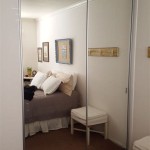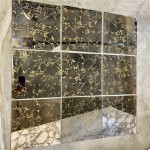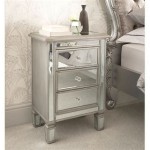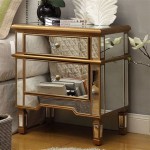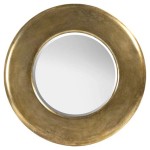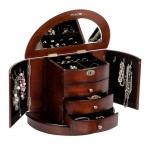Standard Bathroom Mirror Height From Floor
Determining the appropriate height to hang a bathroom mirror involves considering several factors, including user height, mirror size, and vanity height. A correctly positioned mirror ensures functionality and contributes to the overall aesthetic of the bathroom. While no single “standard” height exists, established guidelines and best practices can assist in achieving optimal placement.
Key Considerations for Mirror Height
- Eye Level of Users
- Mirror Dimensions
- Vanity Height (if applicable)
- Ceiling Height
- Lighting Fixtures
- Overall Bathroom Design
- Accessibility Needs
The primary goal when hanging a bathroom mirror is to allow users to comfortably see their reflection. This means centering the mirror at the average eye level of the individuals using the bathroom. While individual eye levels vary, a general guideline suggests positioning the center of the mirror approximately 58-65 inches from the floor. This range accommodates a variety of user heights.
The size of the mirror also influences its placement. Larger mirrors naturally require a lower hanging point to maintain a centered reflection. Conversely, smaller mirrors can be hung slightly higher. The key is to ensure the user's face is reflected comfortably without excessive bending or straining.
Impact of Vanity Height
- Standard Vanity Heights
- Relationship Between Mirror and Vanity
- Visual Balance
In bathrooms with vanities, the vanity height plays a crucial role in mirror placement. Standard vanity heights typically range from 30-36 inches. Ideally, there should be a small gap of 2-4 inches between the top of the vanity and the bottom edge of the mirror. This separation creates visual breathing room and prevents the mirror from appearing cramped.
Maintaining visual balance is another essential consideration. The mirror should be proportionate to the vanity and the overall bathroom space. A large mirror above a small vanity can overwhelm the room, while a small mirror above a large vanity may appear inadequate. Aim for a harmonious relationship between the mirror and vanity sizes.
Ceiling Height and Lighting
- High Ceilings and Mirror Placement
- Low Ceilings and Mirror Placement
- Integration with Lighting Fixtures
Ceiling height influences the perceived vertical space in a bathroom. In rooms with high ceilings, the mirror can be hung slightly higher to accentuate the vertical dimension. Conversely, in rooms with lower ceilings, hanging the mirror slightly lower can help create an illusion of more space. However, prioritize user comfort and ensure adequate headroom regardless of ceiling height.
Lighting fixtures should be integrated seamlessly with the mirror placement. Wall-mounted sconces flanking the mirror are a popular choice and should be positioned at eye level for optimal illumination. Overhead lighting should also be considered to provide balanced and sufficient light for grooming tasks.
Accessibility and Universal Design Principles
- Adapting Mirror Height for Accessibility
- Considerations for Wheelchair Users
- Benefits of Tilting Mirrors
Incorporating accessibility features is crucial for creating a bathroom that caters to all users. For individuals with mobility limitations or those using wheelchairs, the mirror should be positioned lower to ensure comfortable visibility. Tilting mirrors offer further flexibility, allowing users to adjust the angle of the mirror to suit their individual needs.
Universal design principles promote inclusivity and usability for people of all ages and abilities. When planning bathroom mirror placement, consider the diverse needs of potential users. Flexibility in mirror height and the inclusion of adjustable features can enhance accessibility and create a more user-friendly environment.
Impact of Bathroom Design and Style
- Modern Design Considerations
- Traditional Design Considerations
- Cohesive Design Elements
The overall design and style of the bathroom also influence mirror placement. Modern bathrooms often feature minimalist designs with clean lines and simple geometric shapes. The mirror placement in these spaces should complement this aesthetic, focusing on functionality and understated elegance. Traditional bathrooms may incorporate more ornate details and decorative elements. The mirror placement can reflect this style by incorporating framed mirrors or decorative accents.
Ultimately, the goal is to create a cohesive and harmonious bathroom design. The mirror should complement the other design elements, such as the vanity, lighting fixtures, and overall color scheme. By considering these factors, the bathroom mirror can become a functional and aesthetically pleasing element of the space.

Standard Bathroom Vanity Mirror Height Google Search Sizes Measurements Remodel Master

Standard Height Of Bathroom Fittings Small Sinks Dimensions Sink Vanity

Home Interior Design Tips By Miami Firm Bathroom Measurements

All Bathroom Dimensions You Need To Know

The Right Height For Your Bathroom Sinks Mirrors And More

The Right Height For Your Bathroom Sinks Mirrors And More

Pin By Tania Rejalaga On Bathroom Ideas Vanity Sizes Modern Dimensions

Proper Configuration Of Lights Over Vanity With Placement

Optimizing The Bathroom Layout

What Is The Standard Bathroom Vanity Height Size Guide

